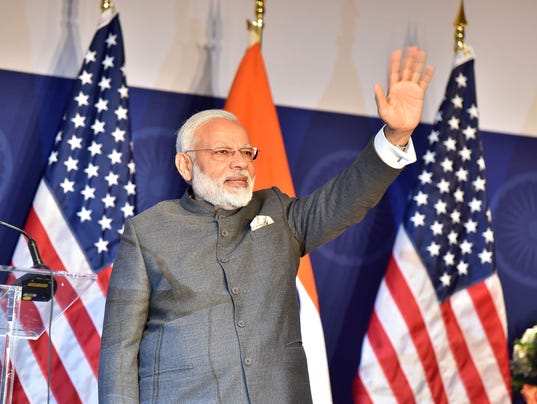President Trump and Indian Prime Minister Narendra Modi met Monday at the White House to discuss an array of issues that range from world trade to international terrorism.
Here are four things the United States and India have in common:
Democracy
India and the United States are the world’s largest democracies. India’s population of 1.3 billion is four times that of the U.S., and more Indians vote in national elections than in any other country. China has roughly the same population as India, but the ruling Communist Party in Beijing does not allow popular elections.
Islamophobia
Both Trump and Modi are viewed by critics as being anti-Muslim. Trump has complained about radical Islamic terrorists and called during his presidential campaign for a ban on Muslim visitors from abroad. His proposed ban on travel from six majority-Muslim nations had been blocked by federal courts as an unconstitutional infringement of religious rights, but the Supreme Court ruled Monday that part of the travel ban can be implemented. The court agreed to hear arguments in the case in the fall. Modi is a Hindu nationalist who has allowed violence and other forms of harassment against India’s Muslim minority.
IT connection
India provides IT services for U.S. tech companies. It also is the top country by far for recruitment of foreign IT specialists needed to fill jobs in the U.S. In 2016, visas were granted for nearly 127,000 Indian specialists hired in the U.S., more than five times the number hired from the No. 2 country, China.
China fears
Both the United States and India see China as an economic and military threat. The U.S. government is concerned about China’s huge trade surplus with the U.S. and its military expansion in the South China Sea. India worries about China’s growing economic might in Southeast Asia, where India wants to compete. The two nuclear powers also fought a war in 1962 over a Himalayan border dispute and are wary of each other.
Read or Share this story: https://usat.ly/2tdhe3Z
